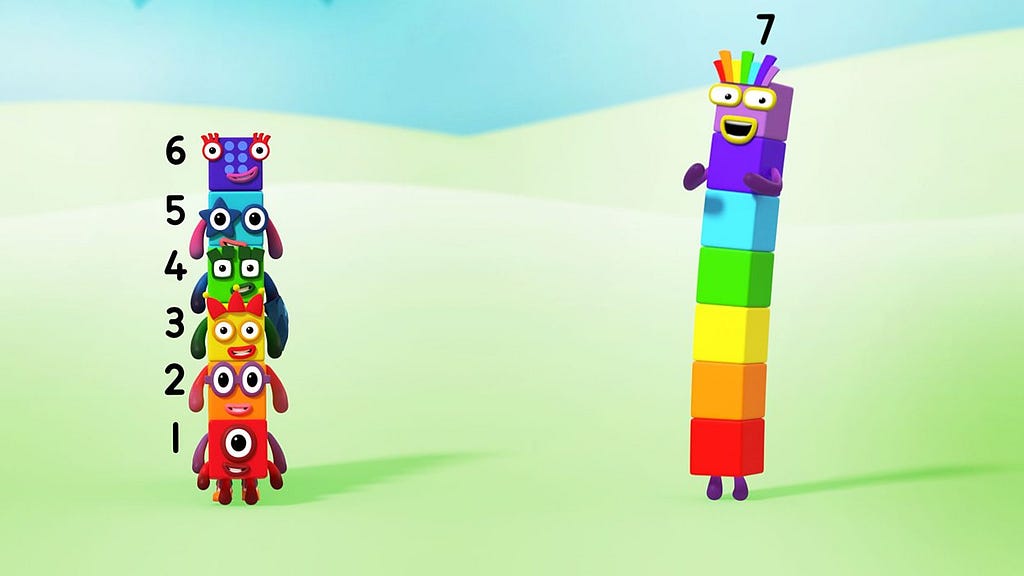7 UX laws so good, they put their names to them
As an intro to UX laws, here’s 7 containing the good people who created them.
In my first story ‘User Experience is …’ I promised that …
over the course of a few stories, I’ll try and cover a few of the sciences we draw upon in our art as a creative community to create engaging experiences.
And previously I’ve talked about Using Gestalt theory to improve the user experience and also how User Experience is … Psychology. But this time out I’m introducing a number of UX laws and how they can be used to improve the User Experience.

Here’s 7 laws that are so good the people who created them put their names to them. Not all the UX laws, but a good way of choosing some to write an intro on.
If you’re interested in these laws, make sure to check out:
1. Fitts’ law

The time to acquire a target is a function of the distance to and size of the target.
Fitts’s Law was established to understanding human physical interaction and movement. It’s all about measuring the time or ease of interaction, which is made up of the distance needed to move and the size of the end interaction point.
Origin
In 1954, psychologist Paul Fitts, examining the human motor system, showed that the time required to move to a target depends on the distance to it and its size. Fast movements and small targets result in greater error rates, due to the speed-accuracy trade-off.
About Fitts’s Law
Fitts’ law can be used in UX and UI design, as guidance for size and positioning of interactive buttons. Larger buttons are better for touch devices as smaller buttons are more difficult and time-consuming to click. Also the distance between a user’s task/attention area and the task-related button should be kept as short as possible.
Key takeaways
- The target area should be large enough for users to select it and also so it’s obvious.
- Buttons should have sufficient spacing between each other.
- Placing similarly used functions or features together allows them to be easily used.
2. Hick’s law

The time it takes to make a decision increases with the number and complexity of choices.
Hick’s Law is named after a British and an American psychologist team of William Edmund Hick and Ray Hyman.
Origin
In 1952, Hicks and Hyman set out to examine the relationship between the number of stimuli and an individual’s reaction time.
About Hick’s Law
Hicks and Hyman found that the more options, the longer it takes the user to make a decision on which one to interact with. Users bombarded with choices have to take time to interpret and decide, giving them work they don’t want.
Key takeaways
- Reduce the amount of choices for the user by breaking down complex tasks.
- Avoid overwhelming users by highlighting recommended options.
- Use progressive onboarding to minimise cognitive load for new users.
3. Jakob’s law

Users spend most of their time on other sites. This means that users prefer your site to work the same way as all the other sites they already know.
Jakob’s Law is named after the founder, Jackob Neilson of the Nielsen Norman Group.
Origin
Jakob Nielsen established the ‘discount usability engineering’ movement for fast and cheap improvements of user interfaces and has invented several usability methods, including heuristic evaluation.
About Jakob’s Law
Jakob found that by using established interaction patterns and methods enabled users to feel familiar and more comfortable. Along with making things more understood and so easier to use. Meaning that users could focus on what they needed to do instead of how to do it.
Key takeaways
- Users will transfer how to use something based on experience with similar things.
- Using understand interaction patterns allows the user to focus on their task rather than learning how to use something.
- Make the user feel comfortable by increasing familiarity.
4. Miller’s law

The average person can only keep 7 (plus or minus 2) items in their working memory.
Miller’s Law highlights the limitation on human’s ability to hold and make sense of information within their working memory.
Origin
In 1956, George Miller found that the immediate memory and judgment were both limited to around 7 pieces of information.
About Miller’s Law
The human mind can remember about 7 bits of information when completing a task. This puts a limit on how many things a person is able to do at the same time. These aren’t just reserved for new pieces of information though, as you might be moving, thinking or remembering previous bits of information. A way to simplify information is to chunk it up, to make it more accessible and easier to think about by reducing the amount, into bitesize chunks.
Key takeaways
- Chunking is an effective method of presenting groups of content in a manageable way.
- Organise content in groups of 5 – 9 items at a time.
5. Parkinson’s law

Any task will inflate until all of the available time is spent.
Parkinson’s Law is based on the theory that work expands so as to fill the time available for its completion.
Origin
Cyril Northcote Parkinson in 1955 wrote about the law in the Economist after observing how the number of employees at the Colonial Office increased, while the British Empire declined even after the Colonial Office was folded into the Foreign Office.
About Parkinson’s Law
Parkinson found that the officials were making work for each and the amount of time that the officials were given to perform a task was the amount of time it will take to complete the task. He observed officials elongating the task either by increasing the quality of work, the alternatives looked at in order to truly exhaust a task, as there were not defined goals or exit criteria.
Key takeaways
- Something can take a longer period of time if it’s done in greater quality
- More alternatives and work can be made in order to prolong a task
- A task can be truly exhaustive with the absence of a goal and clear exit criteria
6. Postel’s law

Be liberal in what you accept, and conservative in what you send.
Postel’s Law is all about being forgiving of the user and the information formats that the user wants to use.
Origin
Postel’s Law (also known as the Robustness Principle) was formulated by Jon Postel, an early pioneer of the Internet. The Law is a design guideline for software, specifically in regards to TCP and networks.
About Postel’s Law
Postel’s Law is all about being forgiving of the format in which information or data is given and where possible interpret it into the desired input that you’re expecting to avoid an error or the user having to find a different format. From the simple input type all the way through to uploading data types. It’s about reducing the error rate and making some as flexible as it is realistic too.
Key takeaways
- Be empathetic, flexible, and tolerant to any number of actions the user could possibly take.
- This means accepting variable input from users, translating input to meet the requirements, defining boundaries for input, and providing clear feedback to the user.
7. Tesla’s law

Tesler’s Law, also known as The Law of Conservation of Complexity, states that for any system there is a certain amount of complexity which cannot be reduced.
Parkinson’s Law is based on the theory that work expands so as to fill the time available for its completion.
Origin
While working for Xerox in the mid-1980s, Larry Tesler realised that the way users interact with applications was just as important as the application itself. The book Designing for Interaction by Dan Saffer, includes an interview with Larry Tesler that describes the law of conservation of complexity.
About Tesla’s Law
Larry Tesler argues that, in most cases, an engineer should spend an extra week reducing the complexity of an application versus making millions of users spend an extra minute using the program because of the extra complexity.
Bruce Tognazzini found that people resist reductions to the amount of complexity in their lives. Thus, when an application is simplified, users begin attempting more complex tasks.
We’d all like to simplify processes and make them faster, but we have to take into account that sometimes there are things that cannot be simplified. In these cases, we’re simply transferring the complexity from one place to another.
Key takeaways
- Spend more time simplifying your product so that thousands of users don’t more time to use it
- Even when you’ve simplified your product, users may well use it to complete even more complex tasks
- Sometimes complex things will just be complex and can’t be simplified further
While we’re on the subject of UX laws, I’m going to look at how to use the principals of affordances and semiotics to improve the usability of your experience.
Written as part of the ‘User Experience is …’ series.
Inspired by:
7 UX laws so good, they put their names to them! was originally published in UX Collective on Medium, where people are continuing the conversation by highlighting and responding to this story.
from UX Collective – Medium https://uxdesign.cc/7-ux-laws-so-good-they-put-their-names-to-them-dd7559b047e0?source=rss—-138adf9c44c—4
